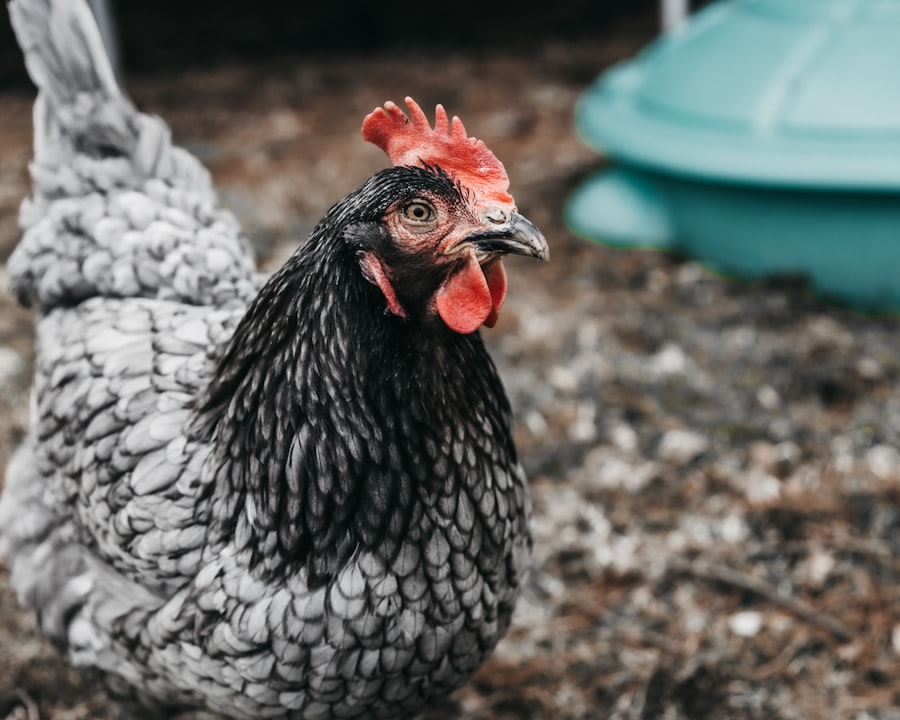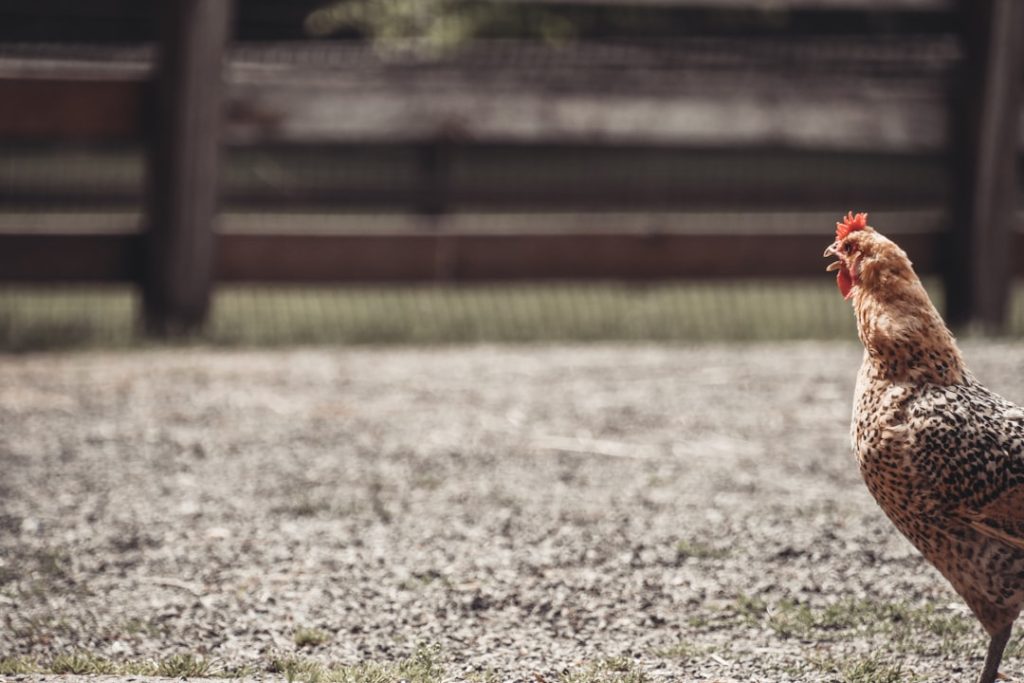Space requirements for chickens are essential considerations when raising them on limited acreage. These requirements vary based on breed, age, and purpose of the birds. Generally, each chicken needs a minimum of 2-3 square feet of coop space and 8-10 square feet of outdoor space for free-ranging or pasture-based systems.
Adequate space allows chickens to exhibit natural behaviors such as roaming, scratching, foraging, dust bathing, and perching, which are crucial for their health and well-being. The coop and outdoor area layout should be designed to accommodate these natural behaviors comfortably. Environmental factors like ventilation, natural light, and access to clean water and feed are also vital for maintaining a healthy living environment.
Sufficient space helps reduce aggression and stress among the flock, leading to improved welfare and productivity. Understanding these space requirements is crucial for determining the appropriate number of chickens to keep on limited acreage and implementing effective management practices. By providing adequate space and considering both physical and environmental factors, chicken owners can ensure the optimal health and productivity of their flock.
Table of Contents
- 1 Factors to Consider When Determining the Number of Chickens per Acre
- 2 Recommended Number of Chickens per Acre
- 3 Impact of Overcrowding on Chickens and the Land
- 4 Alternatives for Managing Chicken Population on Limited Acreage
- 5 Best Practices for Maintaining Healthy Chickens on a Limited Acreage
- 6 Consulting with Local Authorities and Experts for Specific Regulations and Advice
- 7 FAQs
- 7.1 What is the recommended number of chickens per acre?
- 7.2 What factors should be considered when determining the number of chickens per acre?
- 7.3 How does the breed of chicken affect the number of chickens per acre?
- 7.4 What are the benefits of allowing chickens to free-range on pasture?
- 7.5 What are the potential drawbacks of keeping too many chickens per acre?
Key Takeaways
- Understanding the space requirements for chickens is crucial for their health and well-being.
- Factors to consider when determining the number of chickens per acre include the breed, age, and purpose of the chickens, as well as the availability of natural resources.
- The recommended number of chickens per acre varies depending on the factors mentioned above, but generally ranges from 2 to 10 chickens per acre.
- Overcrowding can have negative impacts on both the chickens and the land, leading to health issues and environmental degradation.
- Alternatives for managing chicken population on limited acreage include rotational grazing, mobile coops, and integrating chickens with other livestock.
Factors to Consider When Determining the Number of Chickens per Acre
Outdoor Area and Natural Resources
The size and layout of the outdoor area significantly impact the carrying capacity of the land for chickens. A larger, more diverse outdoor area with access to pasture, trees, and shrubs can support a greater number of chickens compared to a smaller, less diverse area with limited vegetation. The availability of natural resources such as insects, seeds, and vegetation is also crucial, as it can supplement the chickens’ diet, provide enrichment, and support their natural behaviors.
Predators and Environmental Factors
The presence of predators like foxes, raccoons, and birds of prey can affect the number of chickens that can be safely kept on a given acreage. Climate and weather patterns also play a significant role, as extreme temperatures, heavy rainfall, or drought conditions can impact the availability of food and water, as well as the overall suitability of the outdoor environment for chickens.
Management Practices and Welfare
Considering these factors is essential for making informed decisions about the number of chickens to keep per acre and implementing appropriate management practices to support their welfare. By taking into account the outdoor area, natural resources, predators, and environmental factors, farmers and chicken keepers can create a healthy and thriving environment for their chickens.
Recommended Number of Chickens per Acre

The recommended number of chickens per acre can vary depending on a range of factors including the breed, age, purpose, and management practices in place. As a general guideline, it’s recommended to provide at least 250-300 square feet of outdoor space per chicken for free-ranging or pasture-based systems. This equates to approximately 12-15 chickens per 1/4 acre of land.
However, it’s important to note that these recommendations are based on ideal conditions and may need to be adjusted based on specific circumstances such as the availability of natural resources, predator pressure, climate, and management practices. For example, if the outdoor area is relatively small or lacks diverse vegetation for foraging, it may be necessary to reduce the number of chickens per acre to prevent overgrazing and ensure that the birds have enough resources to meet their needs. On the other hand, if the outdoor area is large and diverse with ample natural resources, it may be possible to support a greater number of chickens per acre while still maintaining their welfare.
Ultimately, the recommended number of chickens per acre should be determined based on a thorough assessment of the specific conditions and resources available on the land, as well as an understanding of the space requirements and natural behaviors of chickens.
Impact of Overcrowding on Chickens and the Land
Overcrowding can have significant negative impacts on both the welfare of chickens and the health of the land. When chickens are overcrowded, they may experience increased stress, aggression, and competition for resources such as food, water, and space. This can lead to a range of welfare issues including feather pecking, cannibalism, reduced egg production, and compromised immune function.
Overcrowding can also increase the risk of disease transmission among the flock due to close contact and limited space for movement. In addition to impacting chicken welfare, overcrowding can also have detrimental effects on the land. Overgrazing in small areas can lead to soil erosion, loss of vegetation cover, and degradation of pasture quality.
This can result in reduced forage availability for chickens, as well as negative impacts on soil health and biodiversity. Overcrowding can also lead to an accumulation of manure in small areas, which can contribute to nutrient imbalances in the soil and water pollution if not managed effectively. Understanding the impact of overcrowding on both chickens and the land is essential for implementing appropriate management practices to prevent these negative outcomes.
Alternatives for Managing Chicken Population on Limited Acreage
When faced with limited acreage for raising chickens, there are several alternatives for managing the chicken population to ensure their welfare and minimize negative impacts on the land. One option is to reduce the number of chickens kept on the land by either rehoming some birds or limiting the number of new chicks added to the flock. This can help alleviate overcrowding and ensure that the remaining chickens have enough space and resources to thrive.
Another alternative is to implement rotational grazing or paddock systems to allow different areas of the land to rest and regenerate while chickens are moved between them. Integrating chickens with other livestock such as goats or sheep can also help optimize land use and resource utilization while providing additional benefits such as pest control and nutrient cycling. Additionally, implementing sustainable land management practices such as planting cover crops, rotating crops, and managing pasture vegetation can help support a greater number of chickens on limited acreage by increasing forage availability and improving soil health.
Exploring these alternatives for managing chicken population on limited acreage can help maintain a balance between animal welfare and environmental sustainability.
Best Practices for Maintaining Healthy Chickens on a Limited Acreage

Designing a Comfortable and Secure Living Environment
A well-designed coop is essential for ensuring the health and comfort of chickens. The coop should provide adequate ventilation, natural light, nesting boxes, roosts, and easy access to food and water. Regular cleaning and maintenance of the coop are crucial to prevent disease transmission and maintain optimal hygiene.
Implementing Sustainable Grazing Practices
In addition to providing a suitable living environment, it’s important to implement rotational grazing or paddock systems to prevent overgrazing and allow vegetation to recover. This approach helps maintain pasture quality and supports a greater number of chickens on limited acreage.
Supporting Natural Behaviors and Monitoring Health
Providing enrichment such as dust bathing areas, perches, and access to natural vegetation can help support natural behaviors and reduce stress among the flock. Monitoring chicken behavior, health, and egg production is also crucial to identify any issues early on and take appropriate action to address them. By implementing these best practices, you can maintain healthy chickens on a limited acreage while promoting sustainable land management.
When raising chickens on a limited acreage, it’s important to consult with local authorities and experts to ensure compliance with regulations and obtain specific advice tailored to your location and circumstances. Local zoning regulations may dictate the maximum number of chickens allowed per acre or impose restrictions on coop placement and design. Consulting with local authorities such as zoning boards or agricultural extension offices can help clarify these regulations and ensure that your chicken operation is in compliance.
In addition to regulatory considerations, seeking advice from experts such as veterinarians, poultry specialists, or experienced farmers can provide valuable insights into best practices for managing chickens on limited acreage. These experts can offer guidance on topics such as breed selection, coop design, pasture management, disease prevention, and sustainable land use practices. By consulting with local authorities and experts, you can gain a better understanding of specific regulations and receive tailored advice to support your efforts in raising healthy chickens on a limited acreage.
In conclusion, understanding the space requirements for chickens is essential for making informed decisions about raising these birds on a limited acreage. Factors such as breed, age, purpose, outdoor area size and layout must be considered when determining the number of chickens per acre. Overcrowding can have negative impacts on both chicken welfare and land health; therefore it is important to explore alternatives such as rotational grazing or integrating with other livestock.
Best practices include providing a well-designed coop with adequate ventilation as well as implementing rotational grazing or paddock systems. Lastly consulting with local authorities is crucial in ensuring compliance with regulations while seeking advice from experts will provide valuable insights into best practices for managing chickens on limited acreage.
If you’re wondering how many chickens you can keep per acre, you may also be interested in learning about the best kind of coop for your chickens. Check out this article to find out more about the different types of coops and which one may be best for your flock.
FAQs
What is the recommended number of chickens per acre?
The recommended number of chickens per acre varies depending on the breed of chicken, the quality of the pasture, and the climate. In general, a range of 2-10 chickens per acre is often recommended.
What factors should be considered when determining the number of chickens per acre?
Factors to consider when determining the number of chickens per acre include the breed of chicken, the size and quality of the pasture, the climate, the availability of food and water, and the presence of predators.
How does the breed of chicken affect the number of chickens per acre?
Different breeds of chickens have different foraging and grazing behaviors, as well as different space requirements. Some breeds may be more suited to free-ranging on pasture, while others may require more space or be better suited to confinement.
What are the benefits of allowing chickens to free-range on pasture?
Allowing chickens to free-range on pasture can provide them with access to a more natural diet, including insects and grasses. It can also help to reduce feed costs and provide environmental benefits such as pest control and soil fertilization.
What are the potential drawbacks of keeping too many chickens per acre?
Keeping too many chickens per acre can lead to overgrazing, soil erosion, and nutrient depletion. It can also increase the risk of disease and parasite infestations, as well as lead to competition for food and water.
Meet Walter, the feathered-friend fanatic of Florida! Nestled in the sunshine state, Walter struts through life with his feathered companions, clucking his way to happiness. With a coop that’s fancier than a five-star hotel, he’s the Don Juan of the chicken world. When he’s not teaching his hens to do the cha-cha, you’ll find him in a heated debate with his prized rooster, Sir Clucks-a-Lot. Walter’s poultry passion is no yolk; he’s the sunny-side-up guy you never knew you needed in your flock of friends!








